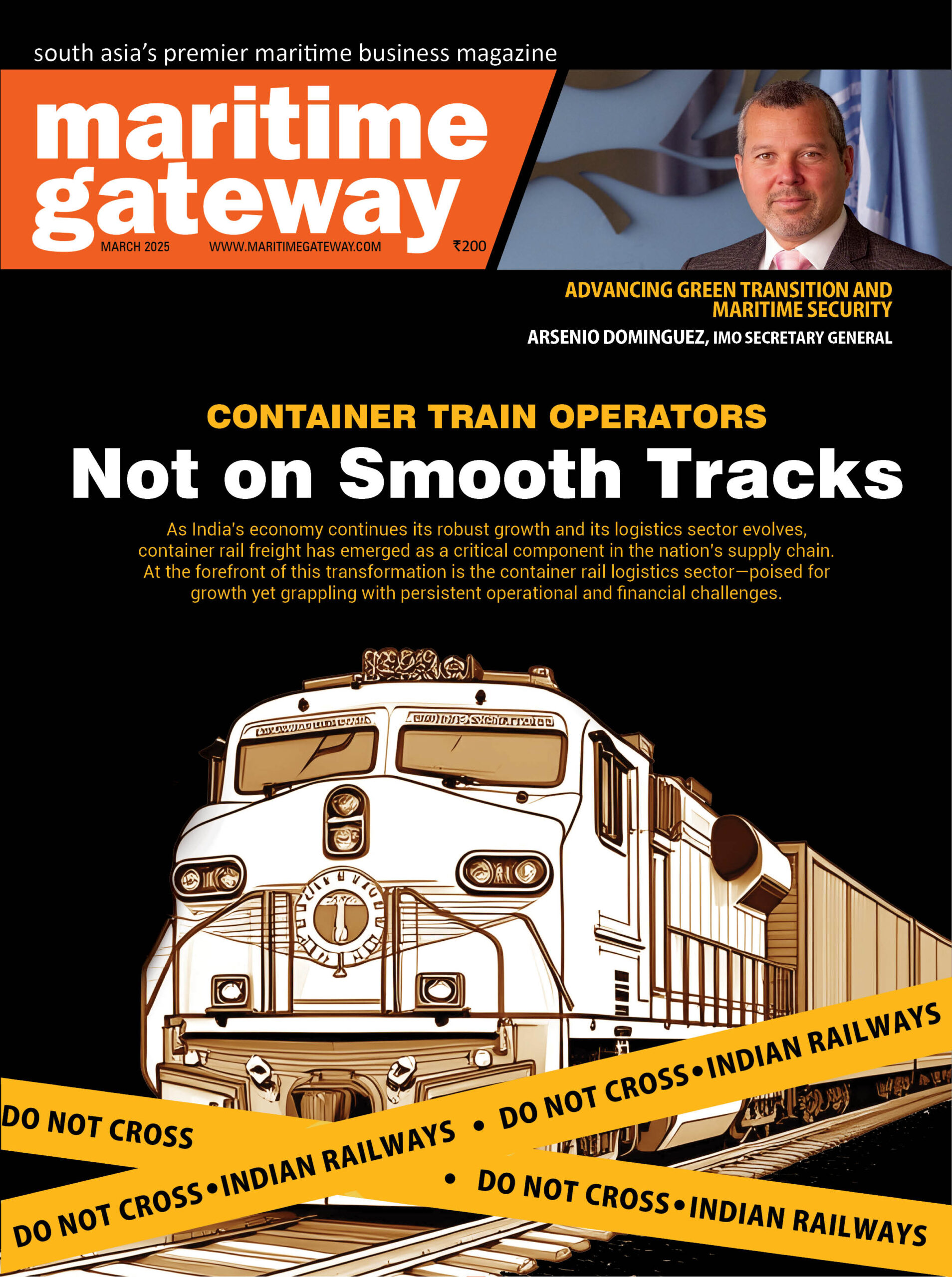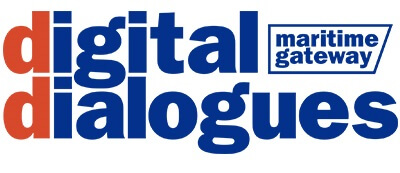Imagine a virtual replica of a bustling seaport—ships gliding in, cranes humming, and cargo containers stacking up—mirrored perfectly in a virtual world all from a computer screen. Every vessel’s movement, every crane’s lift, and even the shifting tides are tracked in real-time. This isn’t science fiction; it’s the power of digital twins, a technology poised to redefine how India’s ports operate. As the nation aims to bolster its maritime infrastructure, digital twins offer a smarter, greener, and more resilient future.
Digital Twin technology is reshaping the landscape of seaport and container terminal operations by creating virtual replicas of physical assets. This innovation enables real-time monitoring, simulation, and optimization of port activities, ultimately boosting efficiency and safety. Singapore’s pioneering digital twin initiative exemplifies the transformative potential of this technology, while India is gearing up to integrate similar advancements into its infrastructure. Think of it as a “SimCity for Ports,” where stakeholders experiment with strategies to optimize efficiency, safety, and sustainability.
What are Digital Twins in seaports
Digital twin technology, once a concept confined to science fiction, has rapidly emerged as an essential tool for modernizing infrastructure and industrial operations. A digital twin is a virtual, real-time replica of a physical entity—like a seaport or container terminal—built using data, simulations, and advanced modelling. For ports, it’s a dynamic digital mirror of the entire ecosystem: ships, cranes, warehouses, and even environmental factors like wind and waves. Sensors embedded across the port collect live data, feeding it into a software-based Twin that reflects what’s happening on the ground—or water—at any moment.
This isn’t just a fancy visualization. Powered by artificial intelligence (AI), machine learning (ML), and the Internet of Things (IoT), digital twins analyse data to predict outcomes, simulate scenarios, and optimize operations. For example, they can schedule vessel arrivals to avoid traffic jams, predict when a crane might need repairs, or test new processes—all without disrupting the real port. For India’s container terminals, this means faster cargo handling, fewer delays, and lower costs.
Singapore’s maritime marvel: A lesson for India
Singapore’s Tuas Port, set to be the world’s largest fully automated terminal by 2040, offers a blueprint for digital twin success. The port’s digital twin integrates data from thousands of sensors, GPS trackers, and AI algorithms to simulate scenarios like vessel congestion, crane breakdowns, or storm disruptions. For instance, during a simulated typhoon, the system rerouted ships and adjusted cargo schedules in minutes, preventing $2 million in potential losses.
Singapore, a global maritime leader, shows what’s possible with digital twins. Its Maritime Digital Twin (MDT), launched by the Maritime and Port Authority of Singapore (MPA) and GovTech, is a benchmark for smart ports worldwide. The MDT pulls real-time data from ships, port equipment, and environmental sensors into a virtual model of Singapore’s port waters and infrastructure.
The results are impressive. AI-driven analytics optimize ship movements, cutting wait times and fuel use. Congestion drops, turnaround times shrink, and service providers thrive. Beyond efficiency, the MDT acts as a testing ground for innovation—think autonomous ships or energy-saving tech—without risking real-world hiccups. It even boosts safety, simulating emergencies like oil spills to sharpen response plans. The twin also enables predictive maintenance: by analysing equipment wear-and-tear data, it schedules repairs before failures occur, reducing downtime by 30%. Such innovations have slashed ship turnaround times by 20%, cementing Singapore’s status as a global maritime leader. By slashing emissions, Singapore’s digital twin aligns with global green goals, offering India a blueprint to follow.
How Digital Twins work at ports
The process begins with IoT sensors embedded across cranes, trucks, and ships, continuously transmitting metrics like location, temperature, and cargo weight to a central system. This data fuels the creation of a dynamic 3D model—a virtual replica of the port—refreshed every second to mirror physical changes. Next, AI-driven analytics take centre stage, with machine learning algorithms predicting delays, optimizing cargo routes, and flagging inefficiencies. Port operators then leverage these insights to run simulations, testing scenarios such as adding new berths or rerouting containers during labour strikes. Finally, actionable solutions—from dashboard alerts to automated crane adjustments—are deployed to enhance efficiency. For instance, Rotterdam Port, Europe’s largest, slashed fuel consumption by 13% using its digital twin to optimize ship speeds and docking sequences, showcasing how this technology isn’t just futuristic but functionally transformative. By experimenting in this digital sandbox, ports improve performance, slash costs, and innovate—all without real-world risks.
India’s bold leap: The Sangam initiative
India isn’t just watching from the sidelines. In February 2024, the Department of Telecommunications (DoT) launched the Sangam: Digital Twin initiative, a proof-of-concept project to revolutionize infrastructure, including ports. Blending digital twins with AI, ML, and IoT, Sangam aims to tackle modern challenges with data-driven precision.
The government is doubling down on digital twin technology through two landmark initiatives: the PM Gati Shakti Digital Twin and the Sangam Digital Twin Initiative. Launched in 2023, the Gati Shakti program focuses on creating virtual replicas of 12 major ports, including JNPT (Mumbai) and Chennai, by integrating real-time data from shipping lines, customs, and road networks. This system predicts congestion hotspots and automates cargo clearance—for instance, rerouting trucks in real-time if a checkpoint delay occurs, slashing idle hours by 40%.
Expanding the scope beyond ports, the Sangam Initiative, announced in 2024, aims to deploy digital twins across airports, highways, and railways. A precursor to this vision is already visible at Hyderabad Airport, where an AI-powered digital twin launched in 2023 uses drones and sensors to optimize baggage handling—a model set to be replicated at ports soon.
Why India’s ports need Digital Twins
India’s 13 major and 200+ minor ports handle over 90% of the nation’s export-import cargo by volume, driving economic growth and global trade. Yet, they face stubborn challenges: clogged terminals, slow processes, and rising environmental demands. Digital twins are the answer.
By mirroring ports virtually, operators can test fixes without guesswork. Congestion plaguing Mumbai’s Jawaharlal Nehru Port? Simulate new schedules. Equipment breakdowns at Chennai Port? Predict maintenance needs. The payoff is huge: sharper decisions, higher throughput, lower costs. Virtual testing also opens doors to automation or renewable energy, boosting competitiveness. Plus, with sustainability in focus, digital twins can track and trim carbon footprints—vital as India eyes green goals.
Take Vizag Port, a key trade hub. A digital twin could optimize its coal and iron ore handling, cutting delays and emissions. Or consider Kandla, where virtual models could plan expansions while dodging environmental snags. As India aims to rival global logistics giants, digital twins are a must-have edge.
Challenges and the road ahead
Adopting digital twins isn’t without hurdles. High upfront costs—sensors, software, skilled staff—could strain budgets. India’s ports, many still modernizing, may lack the tech backbone to start. Data integration is another snag; siloed systems must sync up for the twin to work. And then there’s training—port workers need to master this tech to unlock its potential. Cybersecurity risks, highlighted in a 2023 Springer study, warn of vulnerabilities to hacking or data breaches in poorly secured twins. Additionally, the upfront cost of setting up a port twin—₹50–100 crore—raises eyebrows, though experts argue the long-term ROI outweighs initial investments.
Yet, the rewards outweigh the risks. Singapore proves it: early investment pays off in efficiency and innovation. For India, government backing via Sangam and Gati Shakti signals commitment. Public-private partnerships could ease funding woes, while global collaboration—say, with Singapore—could share know-how. An Ericsson report estimates digital twins could boost port efficiency by 35%, saving India $2.1 billion annually, while optimizing ship routes to cut CO2 emissions aligns with the nation’s 2070 net-zero goals. Private players like Adani Ports are piloting AI-driven cargo systems, while startups such as Detect Technologies deploy drones for surveillance, signalling a collaborative push toward innovation. The government’s Sangam Initiative further aims to establish 50 infrastructure digital twins by 2030.
A smarter, greener maritime future
Digital twins are no longer a futuristic dream—they’re here, reshaping ports from Singapore to India. This tech isn’t just cool; it’s critical. With Sangam leading the charge, India’s ports can leap from congested choke points to sleek, sustainable hubs. Better decisions, lower costs, bolder innovations—digital twins deliver it all. As these digital systems become more widespread, they will not only improve the day-to-day operations of seaports but also enhance strategic planning, leading to smarter, more responsive, and more resilient port management systems.
As ships sail into tomorrow, India stands at a crossroads. Embrace this technology, and its ports won’t just keep pace with the world—they’ll set the pace. A future-ready India starts here, where virtual meets vital, and the maritime map gets a digital makeover.







